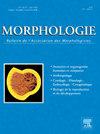Transforming ear anatomy education: Evaluating the impact of innovative teaching methods on medical students’ learning outcomes
Q3 Medicine
引用次数: 0
Abstract
Introduction
The human ear is a complex organ, crucial for hearing and balance, divided into three main parts – the external, middle, and inner ear. Traditional teaching methods for ear anatomy, involving textbooks and lectures, often tend to be inadequate in conveying the three-dimensional relationships and intricate structures, leading to lower retention rates and limited understanding in students.
Aim
To evaluate the impact of low-cost innovative teaching methods on students’ perceptions of learning the intricate details of the inner and middle ear, comparing their perspectives before and after the instructional sessions.
Methodology
This study explores an innovative approach to teaching ear anatomy by incorporating temporal bone sections, ear ossicles, handmade 3D models of the middle and inner ear, and the use of an otoscope. The study involved first-year MBBS students from Diphu Medical College, Assam, India for the session 2023–2024 (n = 100). Students were divided into small groups and engaged in hands-on sessions using these tools. The effectiveness of this approach was assessed through a Likert scale questionnaire. A Wilcoxon rank-sum test was employed to study the difference in responses of the cohort pre- and post-interactive classes. The response data were also correlated using Spearman's rank correlation coefficient.
Results
The results indicated significant (P < 0.05) improvements in students’ understanding and retention of ear anatomy and its mechanism, with enhanced spatial comprehension and practical skills. This method demonstrated higher student satisfaction and confidence in explaining the structures compared to traditional teaching methods.
Conclusion
The findings suggest that incorporating interactive tools in anatomical education can significantly enhance learning outcomes, offering a more effective and engaging way to study complex anatomical structures.
耳部解剖教学的转型:评价创新教学方法对医学生学习成果的影响
人的耳朵是一个复杂的器官,对听力和平衡至关重要,分为三个主要部分——外耳、中耳和内耳。传统的耳解剖教学方法,包括课本和讲座,往往不足以传达三维关系和复杂的结构,导致保留率低,学生的理解有限。目的评估低成本创新教学方法对学生学习内耳和中耳复杂细节认知的影响,比较教学前后学生的观点。方法:本研究通过结合颞骨切片、耳听骨、手工制作的中耳和内耳3D模型以及耳镜的使用,探索了一种创新的耳解剖学教学方法。该研究涉及2023-2024年印度阿萨姆邦迪普医学院的一年级MBBS学生(n = 100)。学生们被分成小组,使用这些工具进行动手操作。该方法的有效性通过李克特量表问卷进行评估。采用Wilcoxon秩和检验来研究互动前后班级的反应差异。采用Spearman等级相关系数对应答数据进行相关分析。结果结果表明:两组间差异有统计学意义(P <;(0.05)提高了学生对耳部解剖及其机制的理解和记忆,增强了学生的空间理解能力和实践能力。与传统的教学方法相比,这种方法在解释结构方面表现出更高的学生满意度和信心。结论在解剖教学中引入交互式教学工具可以显著提高学习效果,为复杂解剖结构的学习提供了一种更有效、更有吸引力的学习方式。
本文章由计算机程序翻译,如有差异,请以英文原文为准。
求助全文
约1分钟内获得全文
求助全文
来源期刊

Morphologie
Medicine-Anatomy
CiteScore
2.30
自引率
0.00%
发文量
150
审稿时长
25 days
期刊介绍:
Morphologie est une revue universitaire avec une ouverture médicale qui sa adresse aux enseignants, aux étudiants, aux chercheurs et aux cliniciens en anatomie et en morphologie. Vous y trouverez les développements les plus actuels de votre spécialité, en France comme a international. Le objectif de Morphologie est d?offrir des lectures privilégiées sous forme de revues générales, d?articles originaux, de mises au point didactiques et de revues de la littérature, qui permettront notamment aux enseignants de optimiser leurs cours et aux spécialistes d?enrichir leurs connaissances.
 求助内容:
求助内容: 应助结果提醒方式:
应助结果提醒方式:


